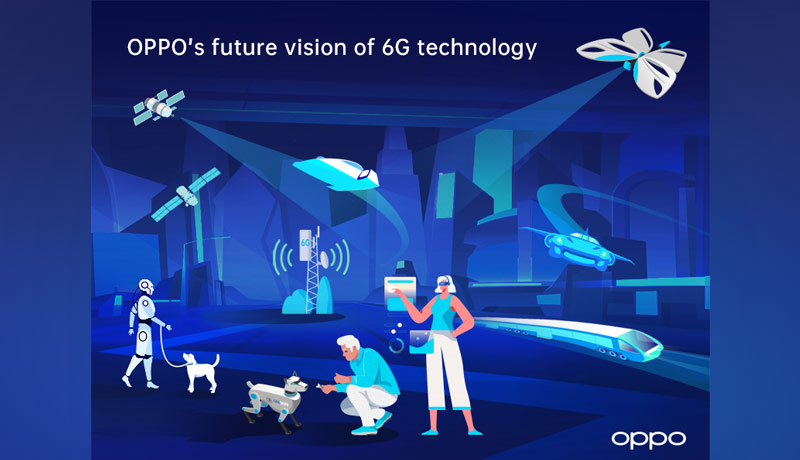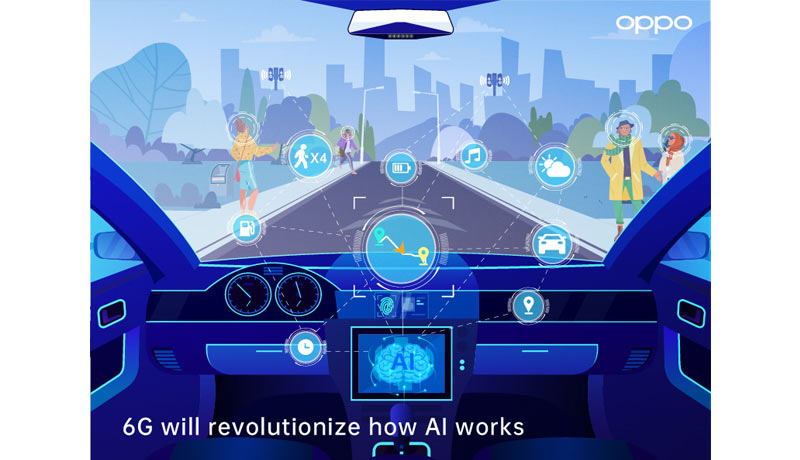
The OPPO Research Institute has officially unveiled its first 6G white paper, “6G AI-Cube Intelligent Networking,” according to OPPO. The white paper provides a more thorough vision for the design of next-generation communication networks and is one of the first in-depth analyses on how artificial intelligence (AI) may enable 6G network architecture in the global and MENA area telecoms industries.

OPPO has formed a pre-research team to gather information on 6G service and technology requirements, essential technologies, and system characteristics. As AI is used to serve the public through a variety of apps, OPPO believes that 6G will alter the way people engage with AI.
Etisalat, the UAE’s telecoms operator, revealed plans for 6G in June 2021, claiming that the network will be quicker and enable applications such as augmented and virtual reality, as well as AI infrastructure. With technology that might enable transmission rates 100 times faster than 5G, near-zero latency and connection densities of up to 10 million devices per square kilometer, the Internet of Things, which is currently a significant component of 5G, becomes a vital element in economic growth.
“Technological development must be forward-looking. Mobile communication technology evolves in decade-long periods, and standardization of the next generation of communication technology is expected to begin in 2025, with commercial implementation following in around 2035,” said Henry Tang, OPPO’s Chief 5G Scientist.
Tang added: “Looking towards 2035, OPPO expects the number of intelligent agents in the world to far exceed the number of humans. Therefore, the next generation of communication technology, 6G, should be able to serve the needs not only of people but of all forms of intelligence and their various interactions. With this end goal in mind, we have carried out the early technical research and system design.”
According to a new IDTechEx study, 6G mobile network technology will become a $1 trillion potential for telecommunications and communications service providers (CSPs). Based on current research, operators will begin deploying 6G networks in 2030, with the technology overlapping with its 5G predecessor for at least seven years until becoming the main network architecture by 2037.
The AI Function Plane, which runs perpendicular to the standard CP and UP planes to form an Intelligent Cube, is introduced in OPPO’s 6G white paper as a new dimension in 6G networks (AI-Cube). This AI-enhanced architecture will improve the 6G network on two levels: network functionality and high-level networking capabilities, allowing 6G networks to self-optimize, dynamically administer and intelligently allocate resources.

6G will radically change how AI infers, learns, interacts, and is deployed, addressing many of the issues that have plagued AI development in the past, such as data silos and user privacy. The white paper recommends splitting AI resources into various areas to address some of the existing limitations of AI algorithms. Multiple nodes and resources in the 6G network will be organised according to specific AI activities, forming AI domains that will provide optimal methods for accurate AI model allocation, network resource scheduling, and data exchange.
Smart gadgets now struggle to use big, generalised AI algorithms due to their limited computational power and storage capacity. Meanwhile, the specialised AI that may operate on these devices is inadequate to fulfill most consumers’ enormous data demands. The AI domain, on the other hand, will be able to act as a conventional base station, database, AI model repository, and application server in 6G networks.
6G devices will be assigned to an AI domain depending on their location and requirements in the proposed network. This AI domain will then issue the best AI algorithm and task for delivering the necessary services, while also offering the best communication link to complete the jobs. Unlike 4G and 5G networks, AI for inference and decision-making will be organically integrated on both the device and network sides in 6G networks, with the device playing a larger role.
OPPO will continue to perform pre-research into 6G technology, which will aid in the development of 6G standards throughout the world in the near future. OPPO will continue to work with its partners to support the large-scale commercialization of 5G as a significant contributor to its popularisation, leading the development of the Internet of Experience through the advancement of communications technology to offer its advantages to all.
